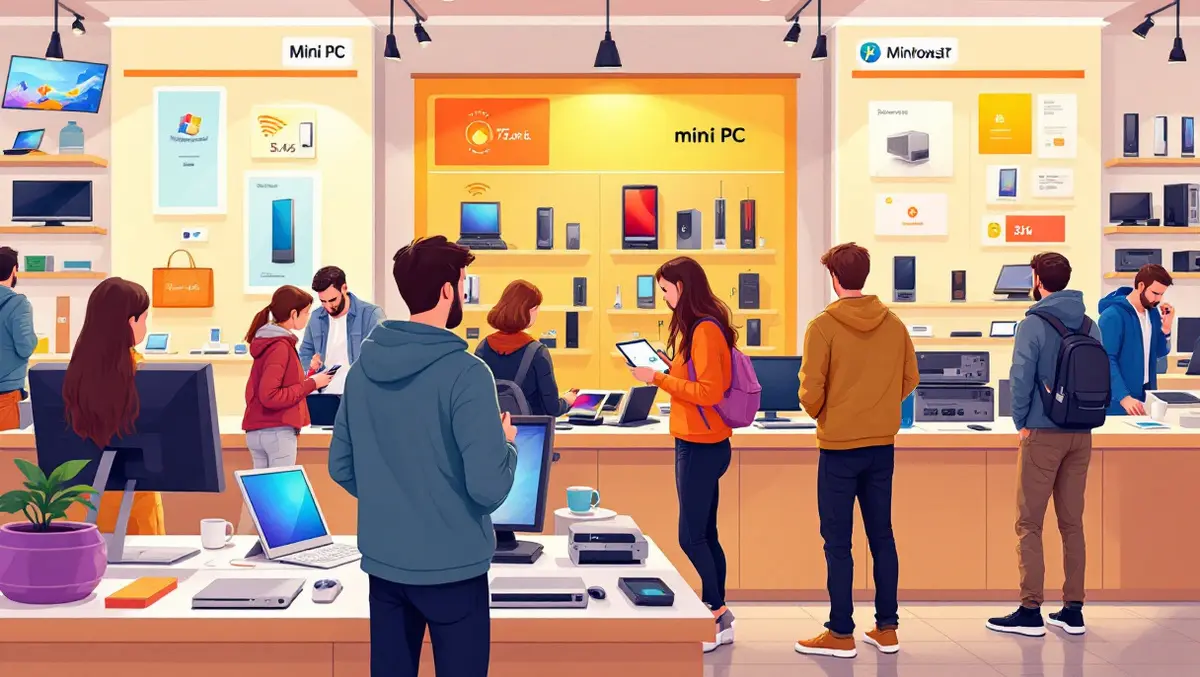
Desktop PC sales remain strong in Europe as mini PCs surge
Early second quarter market data from CONTEXT indicates continued strength in the PC desktop segment and suggests that consumer channels are outperforming commercial ones in notebook sales across Europe.
Following a robust first quarter for desktop computers, figures from the initial weeks of April highlight that desktop sales are maintaining their positive trajectory, defying the usually slower pace associated with post-quarter trading and the impact of fewer business days over the Easter period.
Marie-Christine Pygott, Senior Analyst at CONTEXT, addressed the performance of desktops, stating, "The strength of the desktop market is remarkable. While the end of Windows 10 support plays a role, the more significant driver appears to be a severely aged installed base. Businesses that still rely on desktops are finally upgrading systems that haven't been refreshed since before the pandemic."
Within the desktop category, mini PCs stand out as a key area of growth. These compact and energy-efficient devices are being adopted as cost-effective alternatives to traditional desktops, offering performance improvements and space-saving advantages that are attracting buyers in numerous European countries.
Notebook sales, in contrast, have returned to average levels after a spike at the end of the previous quarter. While the consumer segment continues to show growth, especially in France and Poland, the drivers in France are attributed more to changes in original equipment manufacturer distribution approaches rather than increased consumer demand.
Pygott commented on the divergence between consumer and commercial performance, saying, "The gap between consumer and commercial performance underscores just how cautious businesses remain, even with recent positive GDP figures from France and Germany. We're seeing more encouraging activity in the UK and Poland, particularly around Windows 11-driven refresh cycles, but widespread commercial momentum is still lacking."
Commercial notebook demand remains subdued in key economies, such as Germany and France, with ongoing business caution and uncertain macroeconomic conditions affecting investment in new equipment. Consumer channels, however, continue to lead, with particular strength observed in selected markets.
The report also notes that tablet sales have dropped below index levels at the start of the quarter. This decline follows a strong March that was boosted by new Apple iPad launches, after which demand has subsided as anticipated.
Looking at overall market dynamics, CONTEXT cautions that while the trend for desktops is encouraging, the overall volume in this category is still significantly below what was seen before the COVID-19 pandemic. The combined recovery across desktops and notebooks is described as ongoing but uneven, with different segments and countries demonstrating variable progress.
First quarter year-on-year unit distribution data for PCs (including both notebooks and desktops) across Europe highlights this variability. The United Kingdom saw a 9.0% increase, Germany 7.1%, France 14.0%, and Poland 18.1%. Some countries, such as Italy and Spain, experienced declines of -11.1% and -1.0%, respectively, while Estonia reported a significant 37.7% increase. The most dramatic growth was recorded in Latvia, with a 138.1% rise in unit distribution.
Other markets showing marked gains include Denmark with 33.9%, Finland with 11.9%, Austria with 16.4%, and Ireland with 17.1%. Sweden saw a decrease of -9.0%, and Portugal's distribution declined by -1.0%. These figures reflect the disparate nature of the market recovery, with different countries experiencing differing demand patterns and growth rates.
CONTEXT's analysis suggests that desktop upgrades by businesses coping with outdated equipment, alongside robust consumer notebook activity in selected markets, are shaping PC distribution trends in early 2025. The outlook for the remainder of the year remains uncertain, with overall recovery and commercial sector momentum lagging behind some positive consumer trends.


